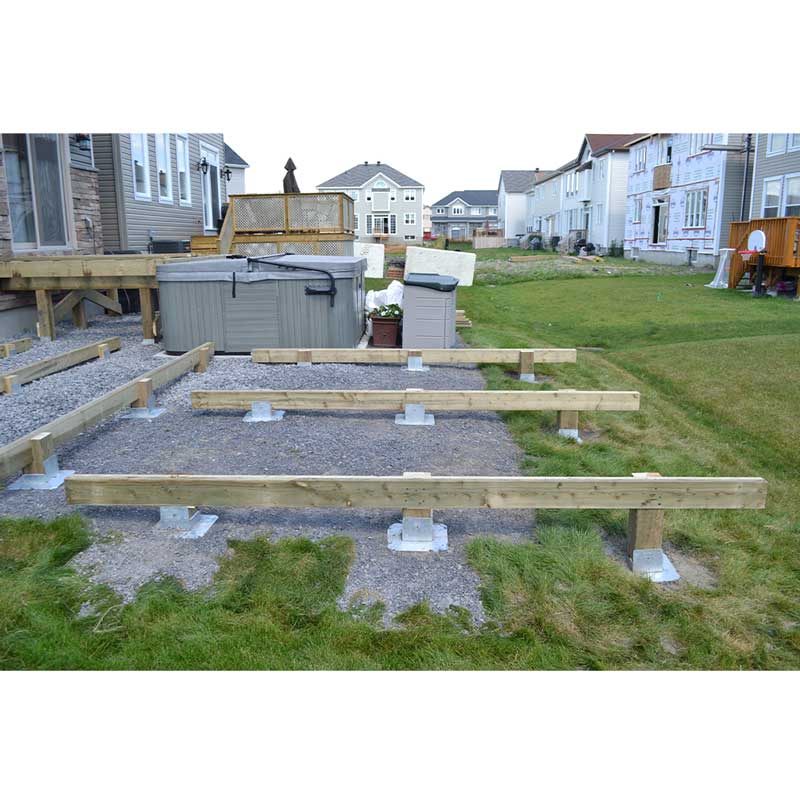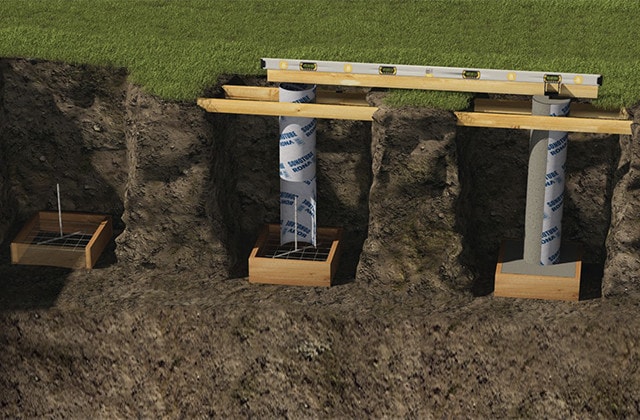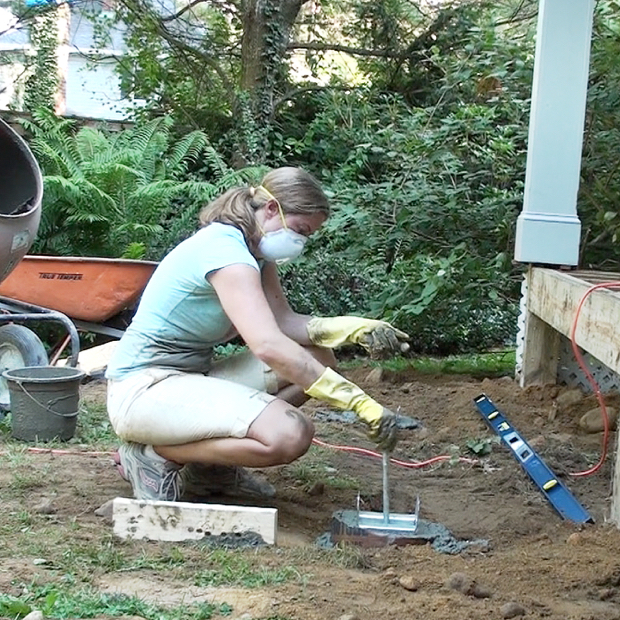From Principle to Concrete: The Crucial Duty of Deck Footings in Sturdy and Safe Decks
From Principle to Concrete: The Crucial Duty of Deck Footings in Sturdy and Safe Decks
Blog Article
Expert Tips for Putting Up Deck Footings to Assistance Your Outdoor Space
When it comes to developing a deck, one of the most essential elements to think about is the setup of correct grounds. These grounds are the foundation upon which your outside area will rest, providing stability and support for years to come. What exactly does it take to mount deck grounds appropriately?
Importance of Proper Deck Grounds
Appropriate deck footings are necessary for guaranteeing the stability and longevity of your exterior room. When constructing a deck, it is vital to take note of the structure on which it will certainly rest. Deck footings give the essential support for the entire framework and assistance distribute the weight equally - Deck Footings. Without strong and effectively mounted footings, your deck may come to be unsteady, leading to safety and security dangers and expensive repairs.

In addition to stability, correct deck grounds additionally add to the durability of your outdoor space (Deck Footings). Grounds that are created and built to stand up to the aspects and soil problems in your location will help protect against the deck from clearing up or changing gradually. By making sure the footings are effectively sized and set up, you can minimize the threat of damage to the deck framework, extending its life-span and minimizing the need for pricey repair work or substitutes

Selecting the Right Kind Of Footings
When choosing the proper sort of grounds for your deck, it is essential to take into consideration variables such as dirt problems, local building ordinance, and the overall design of your outside area. The kind of footing you choose will play a vital function in making sure the stability and durability of your deck.
One common kind of ground is the concrete footing. Concrete grounds appropriate for many soil problems and give excellent support for decks. They are normally mounted listed below the frost line to prevent moving and clearing up as a result of freezing and thawing cycles. Another option is helical piers, which are suitable for locations with unpredictable dirt or high water tables. These piers are screwed into the ground and provide strong support for the deck.
Sometimes, you may need to make use of customized grounds, such as heap grounds or deep structures, if you are building a multi-level or huge deck. These grounds are made to disperse the weight of the deck over a larger area, guaranteeing stability and avoiding sinking or working out.
Before choosing a kind of ground, it is vital to seek advice from regional building codes and policies to ensure conformity. Furthermore, think about the style and meant use of your outside area. Elements such as the size, form, and load-bearing needs of your deck will certainly influence the kind of footing that is most ideal.
Preparing the Ground for Footing Installment
To properly prepare the ground for footing setup, it is important to analyze the soil conditions and best site take needed steps to ensure security and longevity of the deck. The first action is to excavate the area where the footings will certainly be installed.
When the location has been dug deep into, the next action is to small the dirt. This can be done utilizing a plate compactor or by making use of a hand tamper. Condensing the soil assists to remove any type of voids or air pockets, which can bring about clearing up and instability over time.
After compacting the dirt, it is necessary to lay a layer of gravel or smashed stone at the base of the excavation. This will give water drainage and assistance to avoid water from merging around the grounds, which can cause disintegration and instability.
Step-by-Step Guide to Putting Up Deck Footings
After properly preparing the ground for footing setup, the following step is to begin the procedure of mounting deck grounds. This detailed overview will supply you with a clear understanding of just how to set up deck footings for your outdoor space.
Figure out the area: Start by marking the settings of the deck footings utilizing risks and string. Make sure that the areas straighten with the layout and format of your deck.
Dig the openings: Make use of a blog post opening miner or an auger to dig the openings for the grounds. The deepness and size of the openings must remain in conformity with regional building regulations and the details needs of your deck layout.
Level the holes: Make use of a degree to make certain that the openings are dug to the proper depth and are level with each other. (Deck Footings)
Add crushed rock: Area a layer of crushed rock at the end of each opening to boost drain and protect against the timber from rotting.
Insert the footings: Put the grounds right into the openings, seeing to it they are degree and plumb. Utilize a degree and a gauging tape to make certain precision.
Secure the footings: Pour concrete right into the holes around the footings, loading them to the top. Make use of an article degree to make sure the footings remain level as the concrete collections.
Enable time for treating: Let the concrete cure according to the producer's guidelines before waging the deck building.
Typical Mistakes to Stay Clear Of During Footing Setup
One important facet to think about during the installment of deck footings is staying clear of typical blunders that can endanger the security and durability of your exterior room. While deck footings may seem like a simple and straightforward component of the building procedure, neglecting particular elements can bring about costly repairs and possible safety threats down the line.

Furthermore, ignoring to mount proper water drainage steps can create water to build up around the footings, causing rot, decay, and the ultimate weakening of the deck's foundation. Moreover, utilizing the wrong kind of footing material or stopping working to appropriately secure the footings can jeopardize their architectural stability.
To stay clear of these mistakes, it is necessary to speak with a professional or comply with sector guidelines to guarantee correct ground setup. By doing so, you can make sure the stability and longevity of your outdoor area, supplying a risk-free and satisfying environment for years ahead.
Verdict
In verdict, mounting correct deck grounds is vital for the security and long life of your outside space. By important source picking the best sort of grounds and effectively preparing the ground, you can ensure a strong foundation for your deck. Complying with a detailed overview and check it out staying clear of usual mistakes throughout footing installment will even more improve the longevity and safety of your deck.
Correct deck footings are vital for ensuring the stability and long life of your exterior space. The grounds offer as a link between the ground and the deck, enabling the weight of the deck and its passengers to be dispersed uniformly right into the soil.One common type of ground is the concrete ground. Place the footings: Position the footings right into the openings, making sure they are degree and plumb. Secure the grounds: Put concrete right into the openings around the footings, filling them to the top.
Report this page